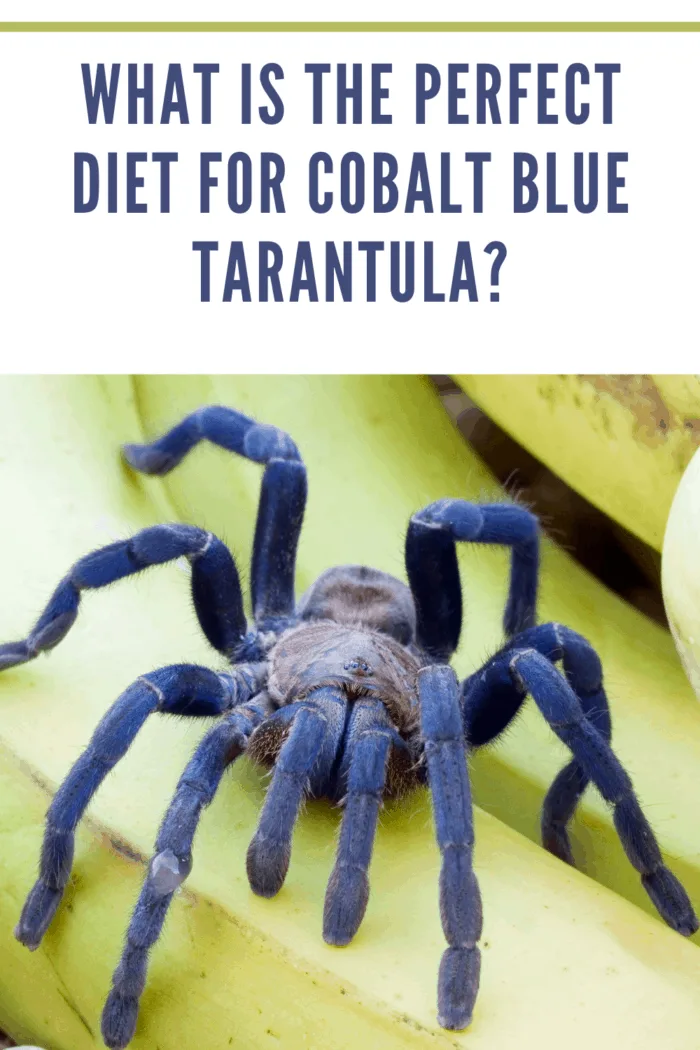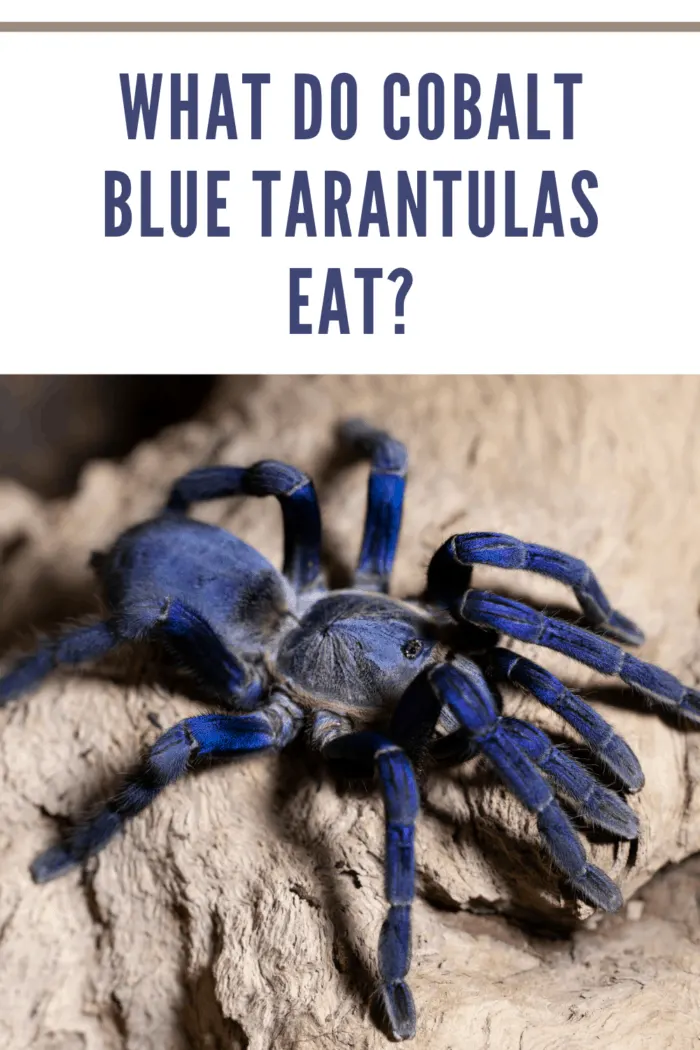Haplopelma lividum is commonly referred to as the cobalt blue tarantula, peculiar due to its metallic blue legs. You can find over 800 species of tarantulas. The blue tarantula belongs to the Theraphosidae family of spiders and is one of the rarest species.
The tarantula is beautiful to look at, and you may consider having it as your pet.
The spider may get very defensive and could be quick to bite.
Their bite need not be venomous but is very painful and could cause spasms in the muscle.
The blue cobalt is believed to be aggressive.
Hence it is typically recommended for those experienced at handling spiders.
Diet plays an essential role in the overall development of your pet.
As a proud owner of a cobalt blue tarantula, you must be aware of its dietary preferences.
The spider typically eats at its discretion and may have some food leftover.
Hence, ensure to keep its tank clean by removing the unfinished feed.
Below are a few key points to make the most appropriate diet plan for your stunning pet spider.

The Type of Food
The spider is a carnivore and enjoys eating live food.
It doesn’t relish the feeding on the dead.
Hence, you must feed the spider with live animals as far as possible.
Cockroaches, worms, beetles, baby mice, and other insects are recommended delicacies.
You can give crickets and more giant insects to a fully grown spider.
A hungry adult spider can eat up to 5 crickets in a week.
Alternatively, they can feed on a single Dubai cockroach instead.
In the case of a spiderling, you can feed pinhead crickets and smaller insects.
Gut-Fed Insects
Make sure that the insects are gut-fed while feeding the tarantula.
Gut-loaded insects keep the spider healthy.
This supplies the required vitamins and nutrients to the cobalt spider.
A proper diet is essential for maintaining the blue pet in the pink of its health.
Water Intake
Tarantulas typically derive moisture mainly from the food eaten.
However, since the blue cobalt originates from a tropical climate, it requires more water than the other species.
Hence you may keep a dish of water within reach of the spider.
Don’t forget to refill it with fresh water daily.
The Periodicity of Feed
Feeding the spider once or twice a week is typically enough to support its growth and development.
In the case of a baby spider, you may be required to feed them every two days due to their development stage.
Tarantulas are known to fast periodically and survive without food for a while.
They can stay up to a few months without having food.
Also, the blue cobalt is a burrower and spends maximum time beneath the burrows.
Thus you need not be worried when your pet refuses to eat.

Do Not Feed While Molting
The tarantulas have an exoskeleton.
This is the outer structure that houses the internal organs of the spider.
The spider needs to shed the exoskeleton and form a new one to grow.
This process is known as molting.
These spiders molt multiple times until they grow into their full size.
You mustn’t feed the tarantula while they molt as the insects may attack the predator.
This could cost the life of your pet.
Also, you must avoid feeding them for a few weeks after they have molted.
If you are skilled at dealing with spiders, you should consider buying the cobalt blue tarantula.
It is a unique pet to possess, not to mention gorgeous.
To conclude, you can take good care of the blue spider by following the recommended diet.
Also, recreating a natural habitat gives your pet a viable environment to grow.
